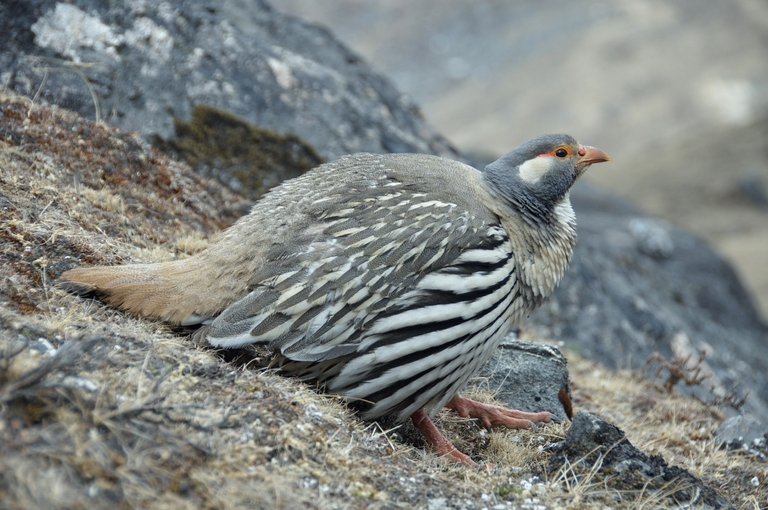How to Hunt Coyotes in the Spring [A Guide]

Spring is a fun time of year to hunt coyotes, but it requires a different approach than fall. With breeding season in full swing and pups on the way, coyotes are more active, making them easier to locate and call in.
Even if you're currently in turkey-hunting mode, a spring coyote hunt can be another great way to get out in the field at this time of year. So, today, we'll cover predator identification, how to hunt coyotes in the spring, essential gear, scouting strategies, and effective calling tactics.
Whether you're new to coyote hunting or refining your skills, these are proven techniques to improve your chances of success.

Why Spring is a Good Time to Hunt Coyotes
Let's start with why spring is an excellent season for hunting coyotes and what makes their behavior different this time of year.
Coyotes don't hibernate, but they're opportunistic hunters. The seasonal change brings a shift in their hunting behavior. Learning their seasonal changes will help you plan a successful hunt.
Coyote Behavior Changes in the Spring
Spring is breeding season, making coyotes more territorial and vocal. They become highly responsive to mating calls and can't resist distress sounds as they protect their territory and hunt to feed their pups.
Less Hunting Pressure
Most hunters are busy with turkeys or spring bear season, so coyotes are less pressured. This reduced pressure makes them more predictable and willing to respond to calls.

When is the Best Time to Hunt Coyotes in Spring?
If local regulations allow, the simple answer is that nighttime is the best time to hunt coyotes — but check local rules to be sure.
If you can't hunt at night, while coyotes are naturally nocturnal, they adjust their patterns based on food availability and seasonal changes. Know when the prey is moving in the area, and be flexible with your approach to timing.
Early Morning and Dusk Are Also Key
Coyotes are most active during low-light periods, especially when hunting for food. Setting up at dawn or just before dusk increases your chances of encountering a moving coyote.
The Breeding Season Offers an Advantage
Coyotes breed between January and March, making them territorial and more likely to respond to vocalizations. Using challenge howls or female yips can trigger a reaction from dominant males.
Avoid Midday Hunts
Coyotes return to the den or rest in shaded or covered areas during the day. While you might still get responses, early morning and late afternoon remain the best time to hunt coyotes in spring.

Gear and Preparation for Spring Coyote Hunts
Having the right hunting gear can make or break your hunt. Spring conditions are all over the place, so your equipment should be adaptable to different weather.
Camouflage for Changing Terrain
Spring landscapes transition from snow-covered ground to green vegetation. Choose neutral camouflage that blends well with open fields, timber, or transitional areas where you'll typically set up.
Choosing the Right Calls
As I said earlier, coyotes are more territorial and vocal in spring. Challenge howls and distress calls are highly effective. Watch film of these calls; if local regulations allow, you can even use these as recorded e-calls.
- Lone Howls and Challenge Calls mimic territorial males, drawing in aggressive coyotes.
- Pup Distress Calls: Since coyotes are raising young, they quickly investigate distress sounds.
- Prey Distress Calls: Rabbits and rodents are primary food sources, making these calls a great way to lure coyotes in.
- Single Bark Call: Stops the coyote for a well-placed shot if it's running.
A good mix of calls will keep coyotes interested without making them suspicious.
Firearms or Bow?
For long-range accuracy, most coyote hunters prefer flat-shooting rifles in a predator caliber, such as .223 or .243.
Bowhunting is a challenging hunt for those who want to hunt up close, in thick cover. However, choose your weapon based on your skill and preference.

Hunting Tactics for Spring Coyotes
Spring coyotes are smart, and while they might be less pressured than in winter, they still got through at least one full hunting season.
One tip I like to give new hunters is to mix in another call with coyote or distress calls. For example, a crow call between distress calls gives your calling a sense of realism. Tell a story.
Here are some additional tips for coyote hunting in spring!
Become an Expert With Calls
Start with a lone howl to spark curiosity and determine if coyotes are nearby. You can then switch to either challenge barks to trigger a territorial reaction or go with a prey distress call to appeal to their hunting instincts. I like to mix it up on return hunts and go howl-challenge- puppy-in-distress.
Above all, avoid overcalling. Give them a chance to react before recalling them, and try to call naturally.
Set Up for Success: Choose the Right Location
Coyotes patrol ridgelines, creek beds, and fence lines, looking for interlopers and prey. Position yourself downwind, using terrain features to break up your outline.
A good elevated position allows you to spot movement before being seen, but be careful not to skyline yourself.

Scouting for Spring Coyote Hunting
The first step to a successful hunt is scouting. Before setting up a hunt, use the preseason to look for tracks, scat, and travel routes.
Identifying Fresh Signs
Tracks are easy to spot in muddy spring conditions. Look for water and track back to den areas. Scat near den sites suggests a high-traffic area, making it a great location to intercept them.
Locating Dens Without Disturbing Them
Coyotes den in brush piles, rocky outcroppings, and abandoned burrows. While hunting near dens is controversial, knowing their location helps you predict movement patterns without directly hunting over a den.
Spring Safety and Ethical Hunting Considerations
Coyote hunting plays a role in wildlife management, but spring has a couple of unique ethical challenges.
Respecting Pup Rearing Season
Spring is pup season, and while it's legal to hunt adults, many hunters prefer to avoid disrupting dens to allow young coyotes a chance to survive. Others see it as a way to reduce multiple predators.
It's an individual judgment and ethics call.
Landowner Permission and Legal Considerations
Always get permission before hunting on private land. Many landowners welcome predator control, but state and local regulations still apply.

Stay Safe (and Have Fun) When Coyote Hunting in Spring
Thanks to increased activity, breeding behavior, and reduced pressure, going coyote hunting in spring offers you a great chance at success. You can significantly improve your chances with good preparation, using the right calls, and setting up in active areas.
Remember to be mindful of pup season, respect land access, and follow regulations.
Make sure you also know how to stay safe in the field and meet your state's requirements for hunter education! An online course through Hunter-Ed is the next step to improving your predator hunting skills and staying updated on hunter safety regulations.
So, before you head for a spring hunt, get your hunter education card!
Take the Hunter-Ed course for your state, then enjoy a safe hunt.






